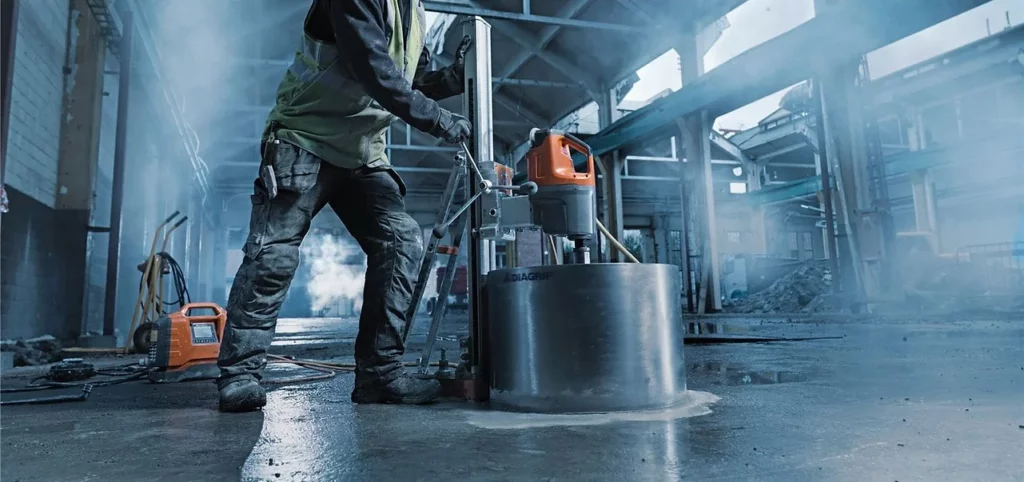What is Core Drilling?
Core drilling is generally used to create openings through existing concrete, stone, block, masonry, and brick. It creates a perfect cylindrical hole in floors, walls, and ceilings. It is also used to extract cores for strength testing of concrete.
Applications
There are many applications that require vertical, horizontal or angled core drilled holes including:
- Sewer lines
- Water lines
- Phone lines
- Fiber optic cabling
- Plumbing
- Electrical conduits
- Manholes
- Fixed bollards
- HVAC systems
Depending on requirements, holes up to 54” in diameter and up to virtually any depth or length can be core drilled.
Core Drilling vs. Hammer Drills
Rather than demolish the concrete, a hollow drilling bit allows for a solid core of material to be cut and removed from the work surface. This unique feature of core drilling greatly reduces mess, noise, vibration and concrete dust.
Dry vs. Wet Core Drilling
Wet core drilling increases productivity because its ability to core faster through structures than dry core drilling. Wet drilling also creates a perfect hole and controls the amount of dust produced by flushing out the cuts with water, leaving behind a cleaner surface.
Precision of Diamond Drill Bits
When it comes to any structure and core drilling, accuracy is the most important factor in preventing flaws and reworks. Even the smallest error in openings can turn into big problems, resulting in unanticipated project delays and additional core drilling hours needed to correct the issue. High quality diamond impregnated drill bits accomplish every job with absolute precision helping to avoid problems.
Preventing Damage Before Drilling
Before the drilling begins, the area must be inspected to locate buried items. This process is completed with a Ground Penetrating Radar (GPR). A GPR will scan and locate water, electrical and gas lines, in-floor tubing, and post tension cables. A GPR prevents any potential damage that may occur prior to the actual core-drilling starting.
The Drilling Process
The next part of the process involves the core drill itself. The operator will bolt a drill post to the core drill, which will ensure that the drill remains straight as it goes into and through the surface. After the drill post is attached to the core-drill, the diamond embedded bit mount is added, which will determine the diameter of the drilled hole. Depending on the size of the project, ten to hundreds of holes can be drilled.
Quality Services
If you need Core Drilling services, make sure to ask the following questions of the providers you are considering:
- How long have you been in business?
- What is the brand of equipment you are using?
- What is the training process for your operators?
- What safety precautions will you take to prevent damage to adjacent areas?
- What precautions will you take to avoid operator injury?
- Do you have any references?
Learn more about Core Drilling
To read how Core Drills have been used in actual applications, download the project case study featured below.
Notre Dame University
Core drilled 230 holes around the perimeter of the football field.
